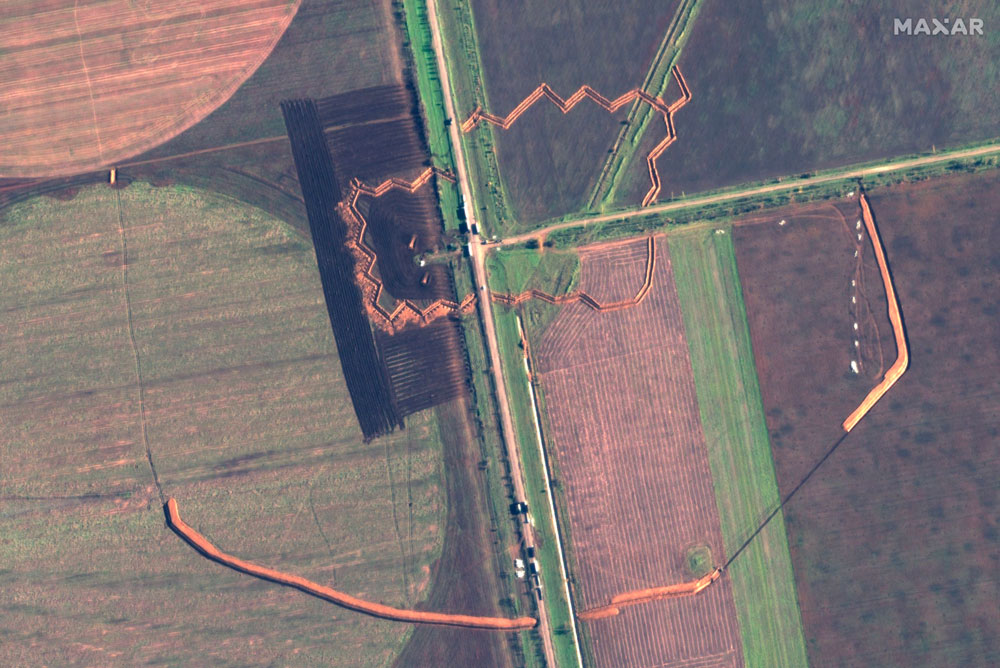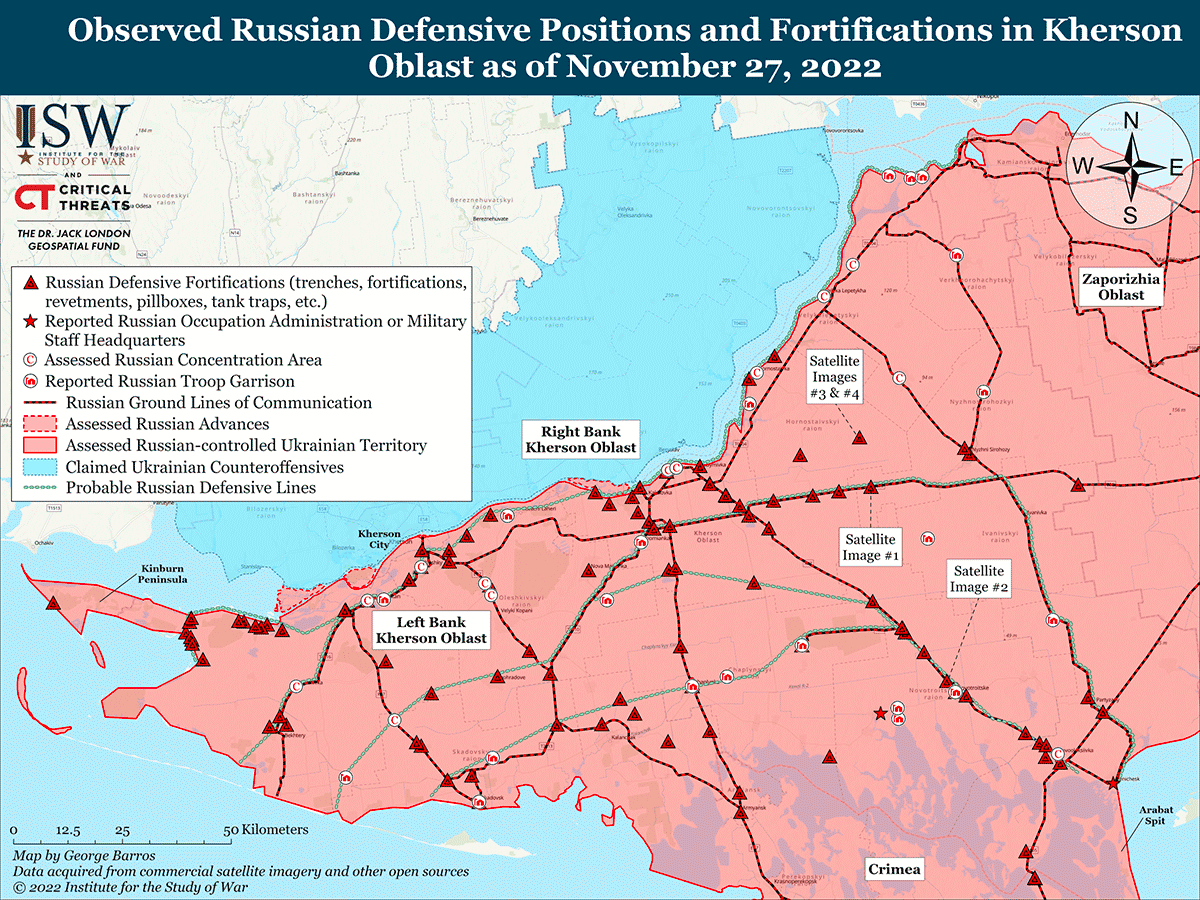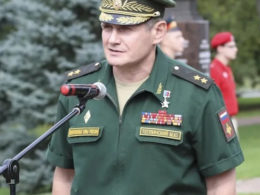In its November 27 Russian offensive campaign assessment, the Washington-based Institute for the Study of War (ISW) has analyzed the Russian defensive lines in the eastern-bank Kherson Oblast’s occupied part and concluded that their structure suggests that Russia expects that the Ukrainian troops may cross the Dnipro River threatening Russian’s line of communications to the Crimean peninsula.
The Russian military clearly assesses that Ukrainian forces could cross the Dnipro River and conduct counter-offensive operations in eastern Kherson Oblast, possibly threatening all of the critical ground lines of communications (GLOCs) from Crimea to the mainland.
Russian forces have been digging trench lines and concentration areas in eastern Kherson since early October 2022 in obvious preparation for the withdrawal from the west bank of the Dnipro River and Kherson City.
Russian troops are preparing either to defend in depth or to conduct operational or strategic delay operations. Russian forces clearly do not expect to be able to prevent Ukrainian forces from getting across the river, nor are the Russians prioritizing defensive positions to stop such a crossing. The Russian military is setting conditions for a protracted defense in eastern Kherson Oblast that could allow the establishment of a solid Ukrainian lodgment on the eastern bank of the Dnipro River.
The assessment that follows examines the Russian defensive laydown and evaluates the expectations for the flow of operations likely guiding that laydown exclusively. This assessment makes no effort to determine whether Ukrainian forces intend to cross or are capable of crossing the Dnipro River in this region and offers no forecast about whether or not they will make any such attempt.

Russian forces are fortifying their positions along critical GLOCs in eastern Kherson Oblast against a possible future Ukrainian counteroffensive. Satellite imagery shows that Russian forces have prioritized digging trenches and erecting dragon’s teeth anti-tank defenses along GLOCs that connect Russian forces on the eastern (left) bank of the Dnipro River with southeastern rear areas in Kherson Oblast and Crimea as well as with eastern rear areas around Melitopol, Zaporizhzhia Oblast.
Most of these field fortifications are situated directly on the GLOCs themselves and are primarily oriented perpendicular to the roads themselves. They are thus most like elaborate roadblocks rather than parts of cohesive defensive lines that stretch across multiple GLOCs and fields. Russian forces have also heavily fortified a 3km-wide strip of land separating the Kinburn Spit from mainland Kherson Oblast and along the beaches immediately south and east of the strip.
The Russian defensive positions suggest that the Russian military leadership views the prospect of a Ukrainian counteroffensive across the Dnipro River as a serious threat. The array of Russian fortifications on and around the Kinburn Spit (as shown in the map) suggests that Russian forces do not expect to maintain positions on the spit itself if Ukrainian forces launch a counterattack against the spit; rather, Russian forces very likely expect Ukrainian forces to take the Kinburn Spit but intend to prevent them from advancing to mainland Kherson Oblast and to defend against an amphibious attack on the land immediately surrounding the spit’s connection to mainland Kherson Oblast.
The layered lines of defense (as shown in the map) provide Russian forces with multiple fallback positions if one defensive line happens to fall while the rest remain intact. Defenses near the spit suggest that Russian forces are concerned that Ukrainian forces could establish themselves on or near the spit and use that base to launch a drive from the west against their defensive positions that are otherwise generally oriented to defend against counter-offensive operations from the north.




